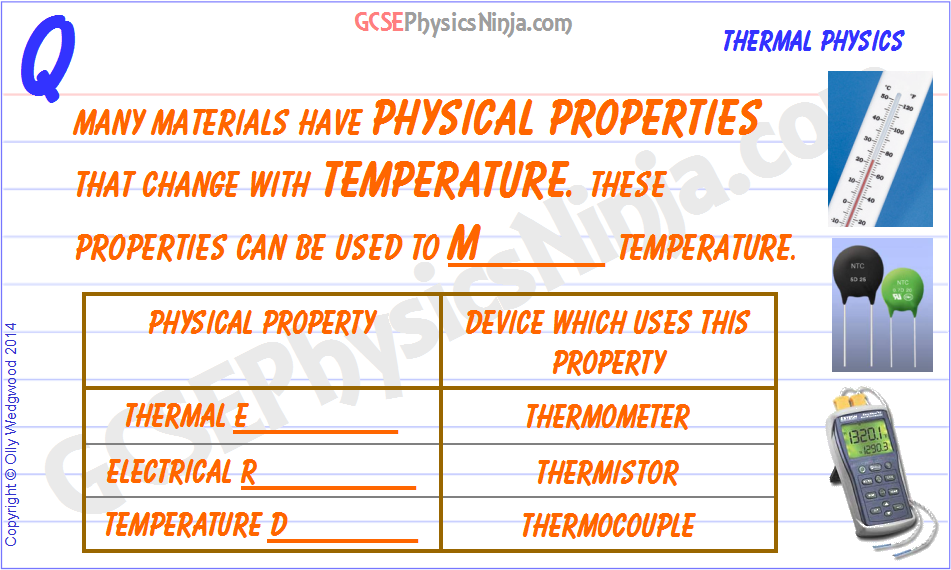
Become a Member to watch ad-free!
Using Material Properties to Measure Temperature
Many materials have properties that will change as you heat them up or cool them down. In other words, their physical properties will change as temperature changes. These properties can be used to measure temperature.
Temperature tells us how much kinetic (thermal) energy the particles of the material have and is measured in units of degrees Celsius or Kelvin.
A thermometer has a liquid in a very narrow tube, which when heated will expand and move up the tube. If you cool the liquid down, then the liquid will contract and move back down the tube. So the physical property used in a thermometer is thermal expansion.
A thermistor is an electronic component called a semiconductor. When it is heated, a 'negative temperature coefficient' (NTC) thermistor's electrical resistance will decrease. It becomes easier for a current to flow through the thermistor and so if you can measure that current then you have a way of measuring temperature.
So a thermistor uses the changing physical property of its electrical resistance to measure temperature.
A thermocouple uses the 'Seebeck effect', which is when a temperature difference in a metal causes a flow of electrons, and therefore a voltage difference.
Two different metals wires are brought together at a junction, which is inserted into a hot substance. The other ends of the metal wires are inserted into into a cooler substance. The temperature difference between the two junctions creates a small voltage which can be measured.
If you have a large temperature difference, then the voltage between the two junctions will also be larger.
A thermocouple is a useful device to measure very high temperatures in remote or dangerous locations - for example, in a volcano!
So the physical property that a thermocouple uses is the temperature difference of a metal and the potential difference (voltage) that this produces.
GCSE Physics Keywords: Temperature, Physical properties, material
